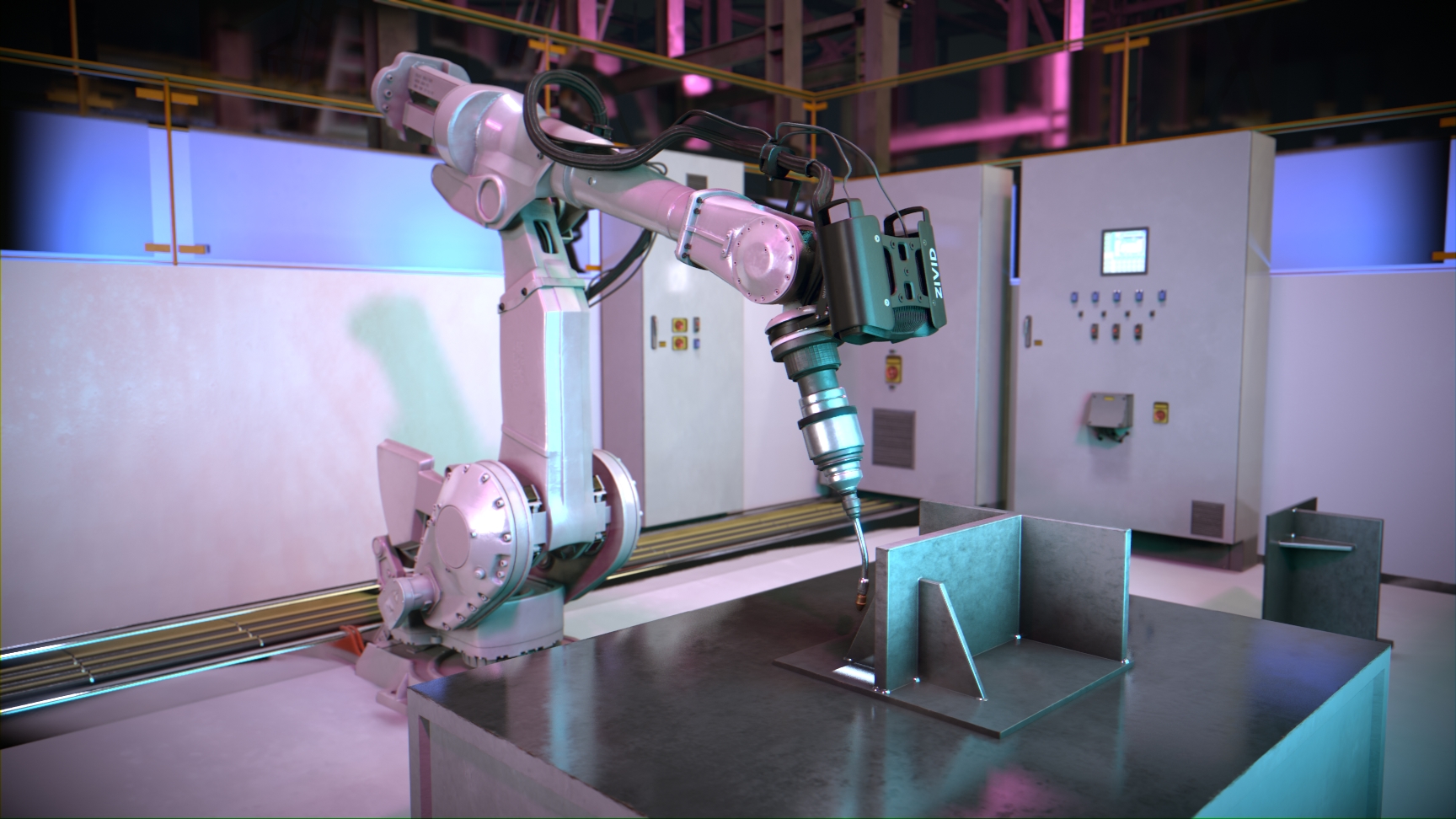What Every Manufacturer Should Know About fibre testing equipment
Wiki Article
The Importance of an Optical Measurement System in Industrial Applications
Optical measurement systems play an important duty in industrial applications. They offer high precision and assist in non-contact measurement, which is important for safeguarding sensitive parts. These systems enhance functional performance and advertise quality assurance. However, their implementation is not without difficulties. Comprehending their significance and the complexities entailed can brighten their transformative potential in contemporary manufacturing. What are the certain advantages and challenges that these systems present?Understanding Optical Measurement Solutions
Optical measurement systems play a necessary function in various commercial applications by offering precise and exact data collection. These systems make use of light to determine physical residential or commercial properties such as dimensions, surface area profiles, and product qualities. The essential parts typically include lasers, video cameras, and sensing units that capture and examine light shown from things. By employing methods such as interferometry and photogrammetry, these systems can detect minute modifications in form and dimension, which are crucial for quality assurance and product consistency.Furthermore, optical measurement systems are non-contact, enabling them to analyze fragile or elaborate items without triggering damage. They are functional, finding applications in fields like aerospace, automobile, and electronics producing. The assimilation of advanced software program for information analysis enhances the functionality of these systems, enabling real-time surveillance and feedback. As sectors develop, the significance of optical measurement systems remains to expand, sustaining the need for greater accuracy and performance.Key Benefits of Optical Measurement in Manufacturing
While conventional measurement techniques usually entail physical call and can present mistakes, the adoption of optical measurement systems in making deals significant advantages. These systems use non-contact strategies, minimizing the threat of damage to delicate parts and ensuring the integrity of dimensions. Optical measurement offers high accuracy and precision, making it possible for suppliers to attain limited tolerances important in competitive markets.Additionally, the rate of optical measurement systems improves productivity. optical fibre diameter analyser. Fast data acquisition permits for real-time surveillance, assisting in immediate adjustments in manufacturing processes. This effectiveness results in reduced waste and enhanced source allocation.Furthermore, the flexibility of optical systems suits a large range of materials and geometries, making them appropriate for various applications. Their capacity to incorporate perfectly with automation modern technologies sustains Market 4.0 efforts, promoting smarter producing atmospheres. Generally, the vital benefits of optical measurement contribute substantially to boosting top quality control and functional efficiency in modern production settingsApplications of Optical Measurement Systems
Optical measurement systems play a crucial duty in different commercial applications, especially in boosting precision during producing procedures. They are important to quality control and assurance, making certain that products satisfy stringent requirements. Additionally, these systems support study and development initiatives by supplying accurate data for technology and improvement.Precision in Production Processes
In modern-day production, high precision is essential for guaranteeing item quality and operational efficiency. Optical measurement systems offer advanced capacities that greatly improve precision during the production procedure. These systems make use of light and imaging modern technologies to capture detailed dimensions of elements, allowing makers to achieve limited resistances and precise dimensions. By integrating optical measurement right into manufacturing process, companies can promptly determine inconsistencies from specs, thereby minimizing waste and decreasing rework. In addition, the non-contact nature of optical dimensions enables evaluating delicate or delicate materials without risk of damage. Eventually, the adoption of optical measurement systems cultivates a culture of accuracy in production, bring about enhanced efficiency and competitiveness in the marketplace.
Quality Assurance and Assurance
Quality control in making greatly depends on exact measurement methods to guarantee that products meet well established requirements. Optical measurement systems play an essential function in this process, making it possible for exact analyses of dimensions, surface area high quality, and other essential attributes of produced products. By using high-resolution imaging and advanced evaluation algorithms, these systems detect deviations from specs, guaranteeing uniformity throughout production. Additionally, optical dimensions can be non-destructive, preserving the honesty of products while promoting fast analyses. The combination of these systems right into top quality control protocols improves effectiveness and lowers waste, eventually contributing to enhanced item dependability. As markets venture for quality, the adoption of optical measurement modern technologies comes to be increasingly necessary for keeping competitive advantage and consumer contentment.
Research and Growth Applications
As sectors endeavor for innovation, optical measurement systems have actually become a crucial device in r & d applications. fibre testing equipment. These innovative systems provide exact measurements of materials and elements, making it possible for designers and researchers to acquire important understandings into their homes and efficiency. Optical measurement modern technologies, such as laser scanning and interferometry, assist in the quick prototyping of brand-new styles and the optimization of existing items. By catching high-resolution data, researchers can identify problems and examine the impact of different criteria fibre testing equipment on product functionality. In addition, these systems support interdisciplinary partnership, linking spaces between various areas of research study. The combination of optical measurement systems into R&D processes ultimately increases development timelines and fosters the creation of advanced remedies in numerous industrial industriesContrasting Optical Measurement to Standard Approaches
In comparing optical measurement systems to traditional techniques, a number of vital aspects arise, including precision and precision. In addition, the speed of measurement and cost-effectiveness play significant functions in establishing the suitability of each approach for industrial applications. This assessment highlights just how improvements in optical technology might use benefits over traditional strategies.Precision and Accuracy
Optical measurement systems supply considerable benefits in precision and precision compared to standard measurement techniques. These systems make use of innovative innovation, such as lasers and high-resolution cameras, to capture dimensional information with marginal error. On the other hand, standard methods usually rely on mechanical tools that can present irregularity as a result of human mistake or material wear. Optical systems can accomplish micrometer-level accuracy, making certain consistent outcomes also in complex geometries. Furthermore, they provide non-contact measurement, lowering the risk of damaging sensitive parts. This capability is particularly beneficial in sectors where resistances are important, such as aerospace and automotive manufacturing. Consequently, the adoption of optical measurement technology boosts quality assurance and reduces the likelihood of problems, eventually boosting overall production effectiveness.Rate of Measurement
The advantages of optical measurement systems extend beyond precision and precision to include substantial renovations in measurement rate. Traditional measurement methods usually require prolonged arrangements and manual calculations, which can reduce production processes. On the other hand, optical systems utilize innovative innovations such as laser scanning and imaging, making it possible for quick information acquisition and handling. This effectiveness permits real-time dimensions, assisting in quicker decision-making in manufacturing settings. The ability to catch large volumes of information in a brief time boosts throughput and productivity, providing services an affordable side. In addition, with minimized measurement times, optical systems lessen downtime associated with examinations, even more simplifying procedures. The speed of measurement in optical systems significantly contributes to overall operational efficiency in industrial applications.Cost-Effectiveness Evaluation
An extensive cost-effectiveness analysis reveals that optical measurement systems typically offer significant economic benefits over typical methods. These systems normally lower the demand for considerable physical setups, reducing labor expenses and downtime throughout measurement processes. Optical methods can likewise produce faster outcomes, bring about increased productivity and decreased functional expenditures. In addition, the precision supplied by optical dimensions decreases the likelihood of costly mistakes, which can occur from hand-operated treatments and conventional strategies. In the future, the initial investment in optical modern technology is often offset by savings in sources, time, and enhanced product high quality. Subsequently, markets that embrace optical measurement systems may discover themselves not just enhancing efficiency however also accomplishing a much more positive cost-benefit proportion compared to standard approaches.
The Role of Automation in Optical Measurement
While numerous industries increasingly rely upon accuracy and performance, automation has emerged as a vital component in improving optical measurement procedures. By integrating automated systems, companies can considerably improve measurement accuracy and minimize human error. Automated optical measurement systems make use of advanced formulas and sensors to supply real-time information analysis, facilitating quicker decision-making and procedure adjustments.Additionally, automation enables regular measurements across various production runs, making sure that high quality requirements are maintained. The scalability of automated optical measurement systems makes them suitable for diverse applications, from high quality control in making to examination in semiconductor production.Furthermore, these systems can be perfectly integrated into existing production configurations, promoting a smooth change towards much more effective operations. On the whole, the role of automation in optical measurement is essential, offering enhanced dependability, decreased labor costs, and enhanced operational efficiency, eventually driving industrial competition.Challenges and Considerations in Implementation
Applying optical measurement systems, despite the advantages of automation, offers numerous challenges and considerations that organizations need to browse. One considerable difficulty is the assimilation of these systems right into existing operations, which might require considerable changes in procedures and worker training. Organizations should likewise resolve the compatibility of optical measurement innovations with existing equipment and software.Additionally, the variability of materials and environmental conditions can impact measurement accuracy, necessitating durable calibration and maintenance methods. Cost is another vital consideration, as initial investments can be considerable, and organizations should weigh these expenses against potential performance gains. Information monitoring likewise poses obstacles, as the quantity of information generated needs effective systems for storage, analysis, and analysis. Ultimately, ensuring compliance with market requirements and guidelines adds an additional layer of intricacy to the implementation procedure, calling for careful planning and execution.Future Trends in Optical Measurement Modern Technology
As industries continue to develop, innovations in optical measurement innovation are readied to transform their functional landscapes. Emerging patterns indicate a change towards raised automation and assimilation with fabricated knowledge, improving the precision and efficiency of dimensions. Flexible optics is gaining traction, permitting systems to change in real-time to differing environmental problems, therefore lessening errors. The miniaturization of optical sensing units is allowing their implementation in extra portable and varied settings, expanding application possibilities in fields such as aerospace and manufacturing.Additionally, the development of 3D optical measurement strategies is revolutionizing quality control processes, providing even more substantial data analysis. Innovations in information processing algorithms are likewise expected to simplify the analysis of intricate measurements, making insights a lot more easily accessible. Jointly, these patterns mirror a future where optical measurement modern technology not just boosts precision yet also enhances functional dexterity, positioning sectors to much better fulfill advancing needs.Regularly Asked Inquiries
Exactly How Do Optical Measurement Systems Ensure Data Accuracy?
Optical measurement systems ensure data accuracy through accurate calibration, advanced formulas, and high-resolution imaging. These components interact to lessen errors, enhance measurement uniformity, and give trustworthy outcomes necessary for different industrial applications and processes.What Is the Normal Life Expectancy of an Optical Measurement System?
The regular lifespan of an optical measurement system varies, typically varying from 5 to fifteen years. Aspects influencing long life include usage strength, environmental conditions, maintenance methods, and technological innovations that may require upgrades or replacements.
Can Optical Measurement Solutions Be Customized for Particular Industries?

What Training Is Needed for Operating Optical Measurement Systems?
Educating for running optical measurement systems typically includes understanding system elements, software use, calibration strategies, data evaluation, and safety protocols. Individuals frequently participate in hands-on technique and might finish certification training courses to boost their proficiency.How Do Ecological Aspects Affect Optical Measurement Outcomes?
Ecological factors, such as temperature, moisture, and lighting conditions, greatly affect optical measurement outcomes. Variations in these components can lead to inaccuracies, impacting the precision and integrity of dimensions taken by optical systems in different settings.Report this wiki page